Entertainment
Black LGBTQIA+ Representation in Superhero Shows, Is It Well Done?
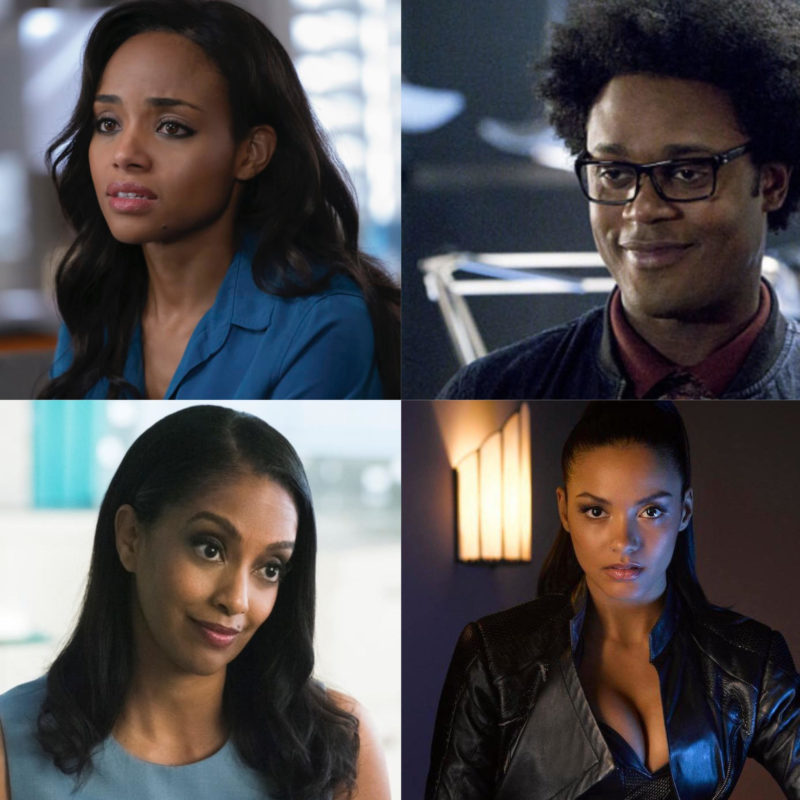
A Small Disclaimer
This article was first written in 2021 and I forgot to finish it. I decided not to update some details (such as Sophie and Ryan from Batwoman indeed getting together) and just let the piece be the way it was originally intended. Think of this as a lost article. If anyone likes it, let me know in the comments or on social media and I can do an updated version. Perhaps some of you can also recommend some other shows with Black LGBTQIA+ characters I might have missed since 2021 or even in this article from 2021 and before.
Black LGBTQIA Representation and Why It Matters
As our society continues to grow more and more progressive and representation becomes more and more important, we must remember two very important things: antiblackness (as well as anti-Black American sentiment specifically) is still an issue and anti-LGBTQIA+ sentiments are still issues. That all being said, it is important now more than ever that Black LGBTQIA+ people see themselves reflected on screens. Our visibility and being treated with dignity and respect are the least these properties can do for us. While everyone deserves to see themselves represented, I find in my experience that Black LGBTQIA characters are pretty far and few between when it comes to superhero content.
A disclaimer: I am only covering characters and properties of the superhero genre specifically in this article. There are more characters in other genres to be explored such as Maya St. Germain and Shana Fring from Pretty Little Liars, Tara Thornton and Lafayette Reynolds from True Blood, and Wade “Unique” Adams from Glee, but that’s for a future article. Let me know in the comments if you’d like such an article. Also, I can only really talk about the shows I’ve seen. There may be more shows with Black characters, but this list is not exhaustive. That being said, sit back, relax, and let me take you on a journey on the Black LGBTQIA+ representation on some superhero shows and whether or not they were handled well.
Also SPOILERS for Batwoman, Arrow, Black Lightning, and Supergirl from the CW as well as Watchmen from HBO, Young Justice from Cartoon Network and HBO Max, and Gotham from FOX.
The CW and Its Black LGBTQIA+ Characters on Superhero Shows

The vast majority of the characters I will be discussing are from the CW Network. We have Ryan Wilder aka the new Batwoman from Batwoman season 2 as well as Sophie Moore from both seasons. Batwoman season 2 also briefly gave us Imani, a new love interest for Ryan after her first relationship ends. We have Anissa Pierce aka Thunder and also Blackbird from Black Lightning as well as Jamillah Olsen. We also had a brief appearance or two from Anissa’s first girlfriend in season 1. Finally, we have Curtis Holt aka Mister Terrific on Arrow and Kelly Olsen from Supergirl. The first thing to note is that with many of these characters, especially the Black women characters, the fandom tends to be incredibly antiblack and irrational when it comes to how these characters are received.
Sophie Moore, Batwoman
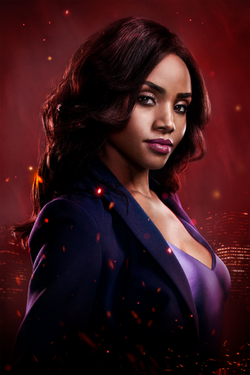
A lot of people still hate Sophie Moore on Batwoman because many fans felt her actress and Ruby Rose as Kate Kane in season one had little chemistry, and of course, because Sophie is Black and a Black woman. The thing is, is that Sophie serves the story just fine. A lot more people also take issue with the fact that Sophie, despite having been top of her class (alongside Kate) in an elite military school and a trained security agent, was often kidnapped and defeated in season one. This is because Sophie was the main love interest of the protagonist in a superhero show, this is what typically happens. The main love interest is in danger, and the hero swoops in to save them. It happened on the CW alone countless times: Clark Kent saving Lana, Lois, and other love interests throughout Smallville, Oliver Queen saving Laurel Lance and Felicity Smoak and assisting Sara Lance on Arrow, Barry Allen saving Iris West, etc. This is simply how these shows tend to be structured. These moments are meant to give us those moments where the hero and their love interest make eyes as they are rescued, and Sophie was no exception. From her introduction, Sophie’s queerness was obvious, especially anytime Kate or later Julia was around. I felt the episode of her and her husband’s breakup as well as her mother’s visit made it obvious that Sophie was indeed a lesbian. Earlier on, Mary questioned Sophie as to whether Sophie was gay or bisexual, as did most of the fandom, but season 2 confirms it when Sophie admits it to Ryan.
As for whether or not Sophie is well-developed or gets enough screen time, I say yes, especially after going back and watching and finishing Batwoman season one (I originally left the show due to the Julia Pennyworth whitewashing casting, but returned due to Javicia Leslie’s casting and finished season 2 first). We know Sophie’s backstory, her motivations, and her loyalties, and she even becomes a useful ally and supporter to the Batwoman even though her boss, Jacob Kane, distrusts her so much. Sophie had a very complex and interesting storyline where it’s slowly revealed that, while she wanted to make her marriage to her husband work, she realized she couldn’t make it work because she’s a lesbian and just can’t love him the way he needs. Plus the storyline with her intolerant mother, while uncomfortable, was believable and unfortunately relatable for a lot of Black LGBTQIA+ people, like me. I also loved all that was done with Sophie’s character in season two when she realizes that working for the Crows is a mistake and ultimately leaves. I also sense, and strongly hope, for some seeds being sown for an eventual Sophie and Ryan pairing I will elaborate on more later.
Ryan Wilder aka Batwoman, Batwoman
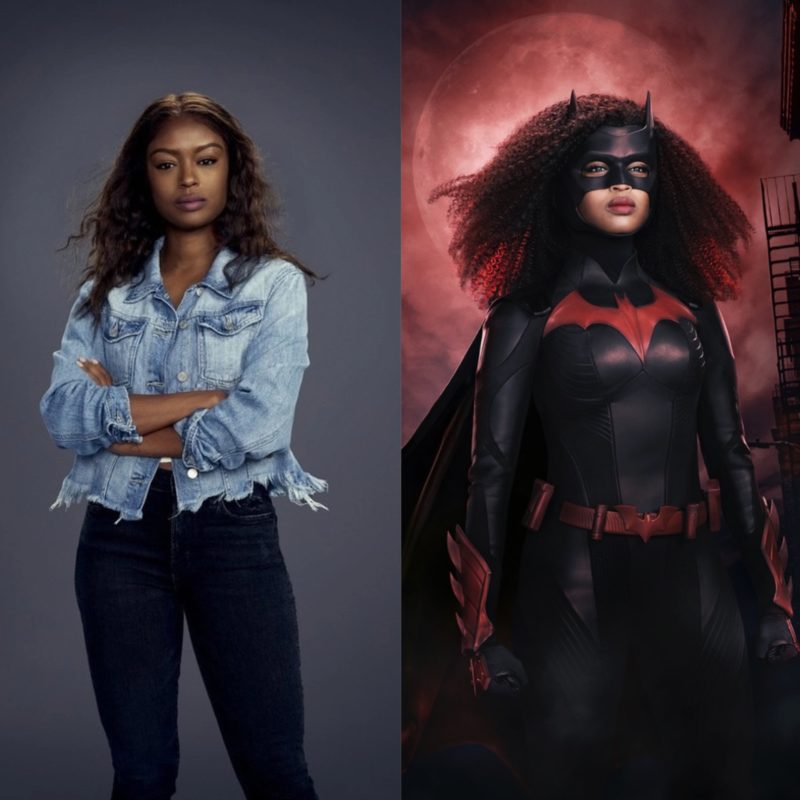
I have to admit that I was immediately taken with Javicia Leslie as Ryan and the new Batwoman in season 2. She was extremely personable and fun, expressive, and could really act. Ryan was very strong in the role and, most importantly, she was her own distinct character and personality type from Kate Kane in season one. The first half of season 2 was a little rough for me when it came to some of the writing as well as certain creative choices. Ryan’s “I’m just a number” speech was a bit cringy for me, I didn’t love the “Bat Girl Magic” episode title (it felt like they were trying too hard and it was a bit tacky), and I did not like Ryan’s main love interest Angelique or their relationship, but more on that later. Ryan’s queerness was clear and a big part of her character, but did not define it.
But by the time the halfway mark came in season 2 starting with the island episode, I was far more impressed with the season. While Javicia and the rest of the cast were keeping me tuned in, finally the writing and most of the decisions started to make more sense. Finally, it was becoming clearer why Ryan Wilder was here and what she brought to the show. Ryan was the match to burn down the system. The new Batwoman was here to be a champion for the overlooked, the voiceless, and the marginalized. Her having been homeless served a purpose, for she cares for the homeless and at one point refuses to bring a swarm of infected bats to an area because she knows that it contains a homeless encampment. Her having been (unjustly) incarcerated means she knows how bad the Crows and the cops are and makes her determined to keep at-risk youth out of the system. She, Mary, and Imani work together to set up a community center to give at-risk folks a place to be and keep them from suffering as she had. As the new protagonist, Ryan’s screen time and development were strong, especially in the second half. Most importantly, the show did a really good job at having Black people talk to each other, (eventually) become friends and trust one another, and have different personalities and views but all agree to work together and help each other. Very nice to see.
Imani, Batwoman
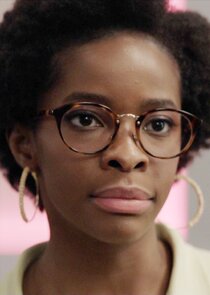
Unfortunately, Imani’s section will be rather brief because she was only a part of the show for such a short time. We meet her after Ryan and Mary start their community center and Imani is a part of it, also clapping back against a reporter claiming community centers are a disaster in Gotham. She is smart, witty, and very well-versed in social justice as well as how and why aspects of the system work or don’t: she knows community centers work, that policing is antiblack and flawed, and that the Powers That Be in Gotham are corrupt. She and Ryan flirt and later start hooking up, with Ryan having to break dates due to her activities as Batwoman. But of course, Imani doesn’t know Ryan is Batwoman and Ryan decides to stop seeing her for her safety and to stop leaving her hanging. While she and Ryan didn’t get the screen time or development of Ryan and Angelique, I appreciated that she was there, because at least we briefly got to see two LGBTQIA Black people interested in each other for once, but more on that later. Since she was primarily used as a love interest for her limited appearances, her queerness was obvious.
Curtis Holt aka Mister Terrific, Arrow
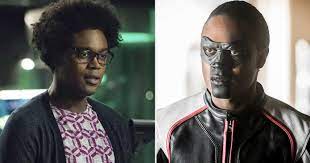
This one hurts me for many reasons. First off, Arrow wasted my time and hurt my feelings with how dirty they did Laurel and other characters way more badass in the comics. Curtis was perhaps the epitome of that. He was immediately one of the worst, most annoying, and most underdeveloped characters of the series. I don’t blame the actor at all for any of that. I place the blame squarely on the writers and showrunners. It was clear to me that despite this was supposed to be Mister Terrific, the third smartest person in all of the DC Universe and someone even Batman went to for advice, the Arrow writers decided to diminish him and his capabilities much like they did Laurel and Huntress. Because on Arrow everyone’s skills and effectiveness had to be compared directly to Oliver (or in Curtis’s case, Felicity). He always had to be the best and the baddest at all times, especially if they were fellow heroes or Arrow team members. Curtis’s queerness was, in my opinion, more so in name only. It felt like it only came up from time to time that he was married to a man until his husband started showing up more. I could be wrong, but since I despise this show, I refuse to go back and confirm.
The fact that Curtis was also made gay on top of being weakened was very upsetting and had some unfortunate implications. So a man whose backstory is that he’s reeling from the death of his wife is the badass we all know and love, but the minute he’s made to be gay he’s little more than a lackey and obvious knock-off for Felicity who herself was terribly underdeveloped and underwritten. From what I saw, Curtis’ relationship with his husband wasn’t even explored all that well and when it was it ends with the husband deciding he can’t handle his husband’s dangerous double-life and issuing an ultimatum… Side note: it is incredibly toxic and messed up to give ultimatums, also extremely manipulative. Anyone who gives them doesn’t deserve you. And don’t be that person who gives them. Overall, from what I saw of Arrow by late-season five or early season 6 or so, while Curtis seemed to have decent screen time, his development, like the rest of the series, felt subpar.
Kelly Olsen, Supergirl
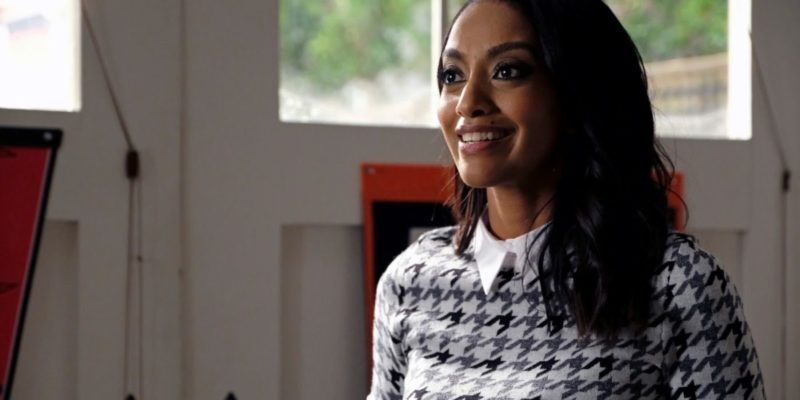
Kelly Olsen, sister to James Olsen, was brought to the Supergirl series not long before James himself would leave the series. Much like the aforementioned Laurel Lance from Arrow, James had been diminished despite the actor and character being brought on as the main love interest initially and suffering and being sidelined after he was no longer the love interest. Kelly’s introduction, was sweet in the sense that we finally meet some of James’ family and someone who cares for him outside of his overwhelmingly white circle of friends. Also, almost immediately we find out Kelly is gay, and of course, is pushed into a relationship with Alex Danvers. Alex is the sister of Supergirl herself who even during Kelly’s introduction was starting to get the lion’s share of storylines and screen time even more than the actual star. This all being said, while Kelly got some independent storylines, particularly dealing with her job during one season, most of her character revolves around Alex.
While I don’t hate Alex and Kelly’s relationship and find it sweet, I feel as though the writers are more committed to them as a couple and Kelly being Alex’s cheerleader than having her own friends, and family outside of James who is off the show now anyway, or anything. Aside from the one season I mentioned, Kelly gets very little not having to do with Alex, while Alex still gets a lot of development and storylines of her own. The racial element of a white character getting more attention, love, and care from the developers as well as the fandom is expressly why I get bored with the CW’s incessant need to only include Black characters to be love interests and cheerleaders to white love interests (Sophie initially) or Black LGBTQIA+ tokens to majority white and non-Black teams (Curtis).
Chenoa, Black Lightning
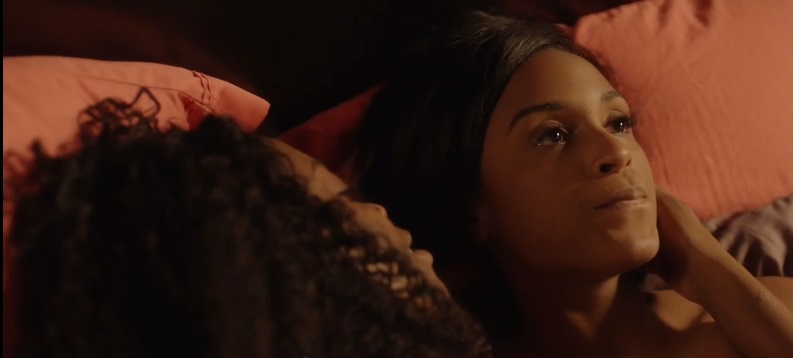
I have to be honest, I didn’t even remember this character’s name until looking it up for this article. Chenoa was Anissa’s first girlfriend in the series, and the character lasted a grand total of two episodes, supposedly coming back for a third which I don’t remember. Given what I already knew about the comics and knowing that Grace Choi was cast for the show, this relationship was obviously doomed, for Anissa and Grace getting and staying together were as foregone a conclusion as having Clark Kent and Lois Lane in the same show or movie. That being said, Chenoa barely left an impact aside from the fact that it is her and Anissa (in the very same scene depicted above) that is the very first we see of same-sex love, as they are making out in bed and the scene ends with more making out and implied sex. In the scene, Chenoa is concerned that she and Anissa have been dating for a year and Chenoa has still yet to meet Anissa’s friends or family. Later the two break up after Chenoa catches Anissa dancing with Grace and feels Anissa is cheating. They almost fight too. Again, while Anissa and Grace were inevitable, it’s a shame that Chenoa hadn’t left more of an impact on the show or Anissa’s life, especially since they were together for a year, even if we never saw it.
Jamillah Olsen, Black Lightning
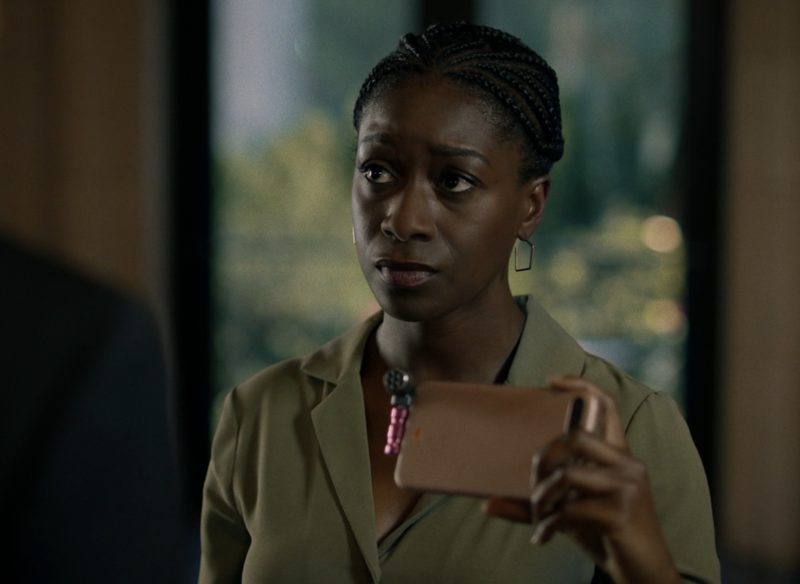
Jamillah Olsen was clearly based on Jimmy Olsen, despite there having been Jimmy as James Olsen on Supergirl. This character felt more similar to the comics’ character because we saw her in the field investigating a lot more. One might argue she was a combination of Jimmy, in name and using images for her work (primarily video, however, to record herself reporting as well as capturing evidence), and Lois Lane in that she often put herself in direct danger for stories. Nevertheless, Jamillah was introduced as a reporter investigating the A.S.A. occupation in Freeland. She was shown in several episodes investigating and reporting on the events occupation during season 3. She eventually joins the Freeland Resistance and also had an affair with Anissa Pierce. Sadly the character dies when she is gunned down by Markovian soldiers while reporting on their activities.
It’s hard to say whether or not I felt her screen time or character development were adequate. Her queerness felt kind of sudden when she and Anissa end up hooking up because otherwise, she was just a reporter for the most part. She was memorable, and she had some potential, but her abrupt death eliminated further possibilities.
Anissa Pierce aka Thunder aka Blackbird, Black Lightning
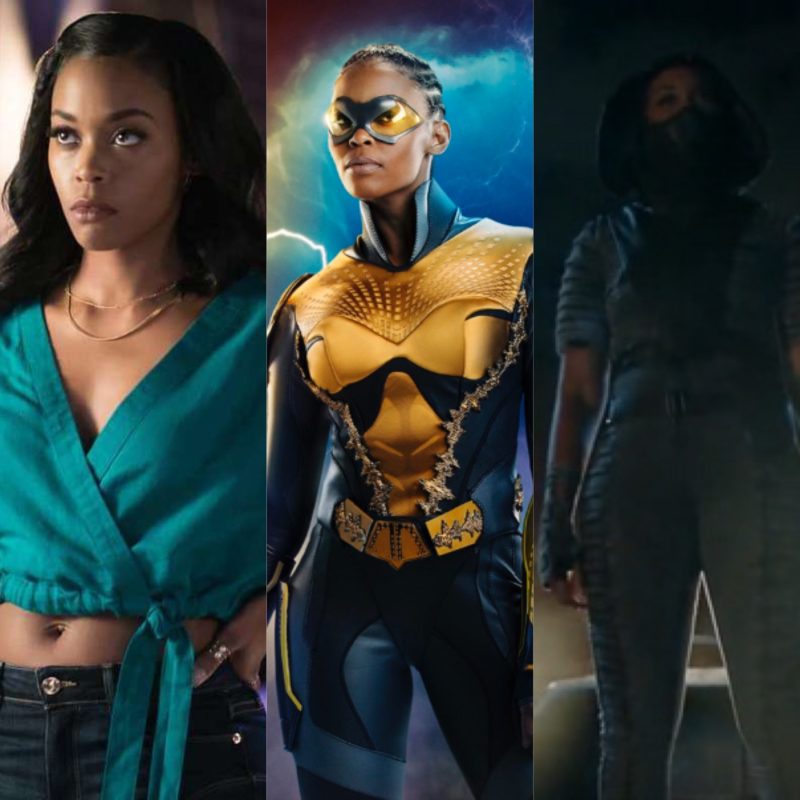
I saved the best for last, though Ryan Wilder is shaping up to be just as excellent as Anissa was. Anissa holds the distinction of being the superhero genre’s very first Black woman superhero onscreen. She was very layered, determined, bold, courageous and incredibly charismatic, and watchable. Anissa was also incredibly fun but also serious when she needed to be. Black Lightning will forever hold a special place in my heart not just for her character, but her familial relationships. She had distinct and very well-developed connections with her father, mother, sister, and godfather that all felt distinct and particular. The show was really good at dealing with families. As for Anissa’s queerness, I felt her queerness in and of itself was handled well. I didn’t love her relationships, but more on that later. While I personally don’t love heterosexual actors playing LGBTQIA+ roles, I felt Nafessa did a very good job and was convincing and believable as a lesbian character. But most of all, she was incredibly powerful and badass, and regardless of sexuality, it’s always a joy to see Black women kicking ass and being powerful.
Being one of the leads, Anissa gets some of the show’s best screen time and character development. Her journey is extensive and layered, her circumstances ever-changing. Anissa was a fan favorite alongside China Anne McClain as her younger sister Jennifer aka Lightning. It still stings to see Black Lightning go, which I’ve written about here before, but I still hold hopes for the character to be included in future properties such as video games, shows, films, books, and comics. I definitely intend to finish my collection of the Outsiders comics that first introduced Anissa Pierce to the world.
Other Black LGBTQIA+ Characters from Other Networks

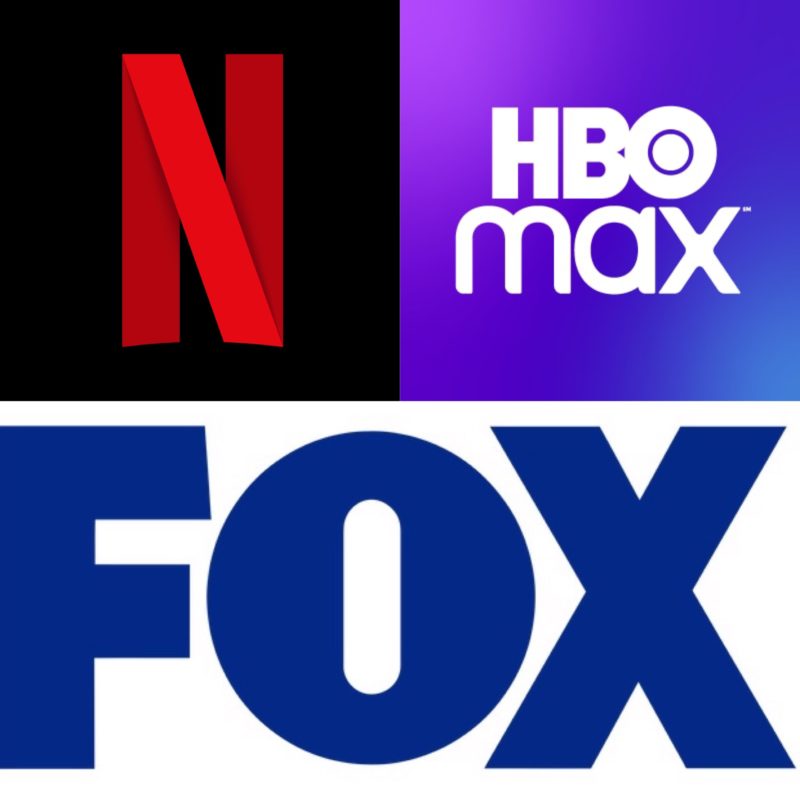
For these next characters, we finally leave the CW and explore some other networks. From Cartoon Network we have Kaldur’ahm aka Aqualad and now Aquaman on Young Justice. However, the character’s becoming Aquaman and being revealed as LGBTQIA+ in the series didn’t happen until the series moved to HBO Max. Also on HBO Max was the character of Hooded Justice, a character from the original Watchmen comics. This series reveals that the character was Black, gay, and the grandfather of the protagonist Angela Abar. Then on FOX, we had the openly bisexual Tabitha Galavan aka Tigress featured throughout most of the series run. Finally, we have Sense 8, a Netflix original series, with my personal favorite from that series, Amanita Caplan.
Kaldur’ahm aka Aqualad aka Aquaman, Young Justice
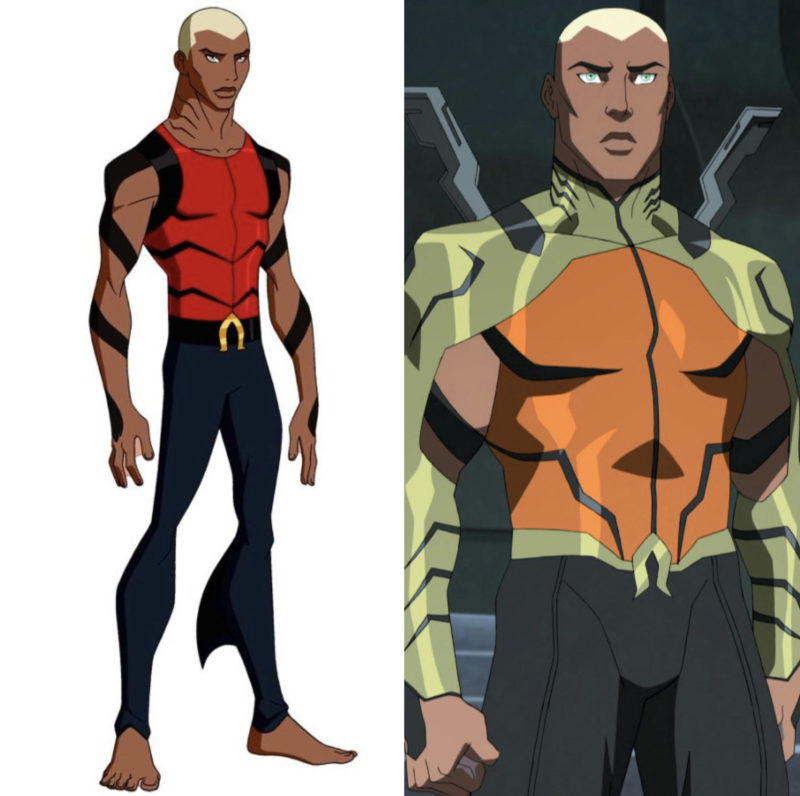
Anyone who knows me knows that I have a lot of problems with Young Justice, while also enjoying it. They chose the wrong Robin and Kid Flash for the series and shoehorned unnecessary romances (especially Conner and M’gann). But that’s a topic for another article. We’re here to discuss Kaldur. The show was honestly bold from the get-go to have not Robin (Dick Grayson at that) become the leader of the constantly unnamed Young Justice team, but the Black member and relative newcomer compared to the rest. In fact, while the character was planned to appear in the comics, I believe the character first appeared in the series before he did appear in the comics as Jackson Hyde. The character was competent, powerful, sensible, and brave. By season two we learn he is, in fact, the son of Black Manta and he seemingly betrays his team before it’s eventually revealed to be a ruse.
In season 1, we go to Atlantis and we meet Tula, aka the ill-fated Auqagirl from the comics. In this continuity, Tula dated Kaldur first before he left to become Aqualad and assist Aquaman. When he returned, she had moved on to his best friend Garth, the original Aqualad in the comics but not in this version. Kaldur clearly feels uncomfortable with this knowledge, but eventually gives his blessing. Kaldur also gets a kiss on the cheek from Rocket during the finale when everyone else is kissing their love interests. He looks shocked, but not uncomfortable.
By season 3 the series moved to HBO Max and ramped up the violence (poor Halo in particular gets brutalized a lot because they can revive themself) and adult content. A few things were made apparent: that the season and narrative primarily focused on the new Outsiders team (as the title suggested), and that Kaldur, now Aquaman, was less present. While it was fun to see that he became Aquaman, Black characters getting promotions and appearing less are recurring issues in a lot of shows. It happened to James Olsen on Supergirl and also Hale from Lost Girl. However, as a shock to some, Kaldur was shown kissing his male partner he was shown working alongside, revealing him to be his boyfriend. I read online that Jackson Hyde/Aqualad in the comics was established as gay for some time, but the character being LGBTQIA+ wasn’t revealed until the series moved to HBO Max. I also wonder if Cartoon Network would have allowed two male characters to be shown kissing onscreen. Either way, Kaldur’s queerness wasn’t introduced or even hinted at until the third season, and in that season he has the least screen time.
Will Reeves aka Hooded Justice, Watchmen
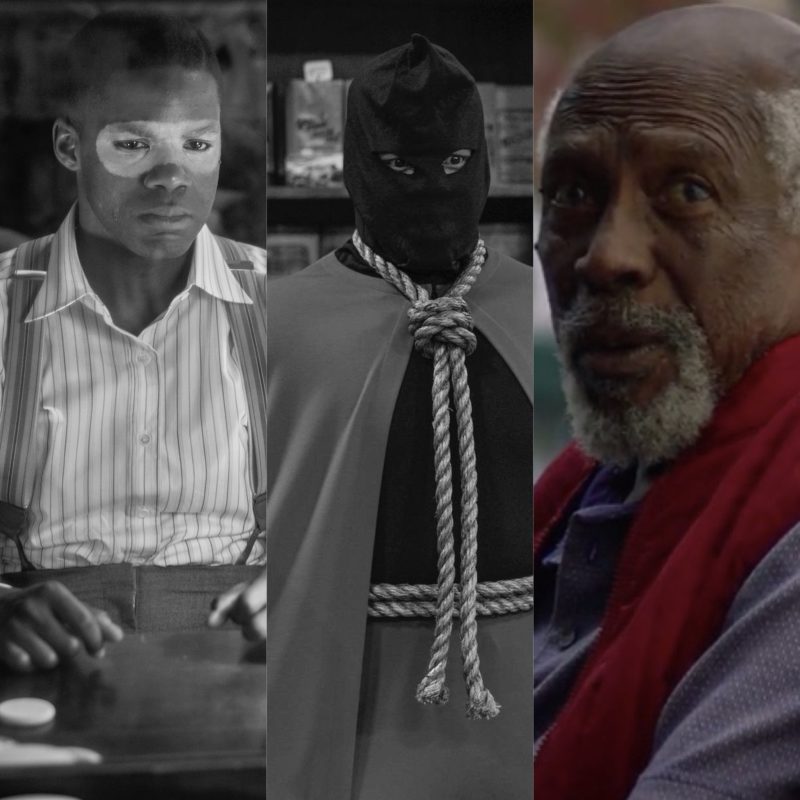
The Watchmen series on HBO Max took the world by storm. Serving as a continuation to the comic storyline (though whether or not it’s considered canon is still contested), the story is set in 2019 (also the time of the show’s release) after the infamous squid incident in New York. This time, however, the story takes place primarily in Tulsa, Oklahoma, and follows Angela Abar (played by Regina King), who is a masked police detective for Tulsa’s police department. As Regina learns more about her past and her family, she learns that her grandfather is Will Reeves, a mysterious wheelchair-bound elderly man. In some truly spectacular storytelling, we learn the circumstances of Reeves’ life and how he became Hooded Justice, one of, if not the, first masked vigilantes. It is also here that we find out that while he had been married to Angela’s grandmother, June Abar, he engaged in an affair with Nelson Gardner who recruited Reeves to join him as one of the Minutemen, a team of costumed heroes. Of all the heroes, Hooded Justice was the only member whose true identity was never revealed to the public, likely because he was Black and it was the ’30s or ’40s.
Reeves was a fascinating character, expertly played by all his actors in various stages of his life, and he was incredibly nuanced and well-developed. As a Black LGBTQIA+ character, he was one of the best we have ever had. As an older man, he further provided representation as he was now disabled as well. His screen time was really good, as he was a main character. The Tulsa storyline overall was gut-wrenching and beautifully done, and his involvement in it made him the ultimate link to the storyline’s past and present as well as a living reminder of Black American survival and perseverance. Having dealt with the KKK as a child and adult and antiblack racism all his life including from his own lover (more on that later) and team made him complex and resilient as well as hardened. Reeves’ reveal as Hooded Justice not only worked and made sense (the white makeup around the eyes was brilliant). What a lot of antiblack racist fans and haters of the series fail to realize is that Watchmen, as a franchise, was always about focusing on the issues at the time. In the mid-’80s that was one thing, but in the present day, it’s definitely antiblack racism, anti-Black American sentiment, and issues such as reparations.
Tabitha Galavan aka Tigress, Gotham
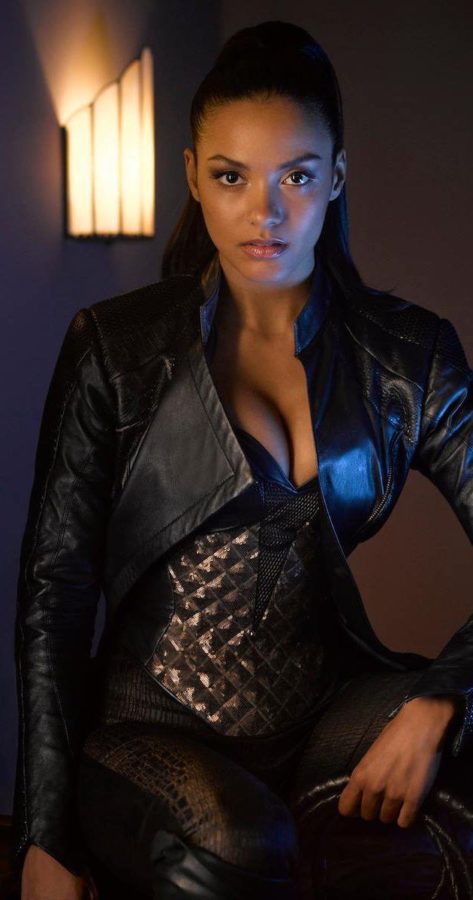
Tabitha Galavan, sister of Theo Galavan, was originally introduced as being just as ruthless as her brother. Sexy and badass, Tabitha was a deadly fighter and master of weapons including whips and knives. Her opposing Theo as he got more and more out of control and was threatening their niece, Silver St. Cloud, was one of the first glimpses of Tabitha’s humanity. It was also through her relationships with Barbara Kean and later Butch Gilzean, as well as her mentoring of a young Selina Kyle that provided further nuance for her character. In the end, after many seasons of badassery and some decent storylines, Tabitha met her end at the hands of Oswald Cobblepot, avenging his mother, whom she had killed earlier in the series to spite him.
Tabitha’s demise was not undeserved: she killed Penguin’s mother, an innocent woman, just to emotionally scar her son. However, it is unfortunate that the show spend so many seasons fleshing out Tabitha’s character and relationships before Penguin was finally like: gotcha, you didn’t think I forgave and forgot, did you? Given how much time was spent humanizing her, Tabitha’s death felt more like a waste and shock value than a natural conclusion. Couldn’t there have been a redemption arc for killing Penguin’s mother? Unlike other people who were mostly opponents, Lady Cobblepot didn’t have it coming.
Amanita “Neets” Caplan, Sense8
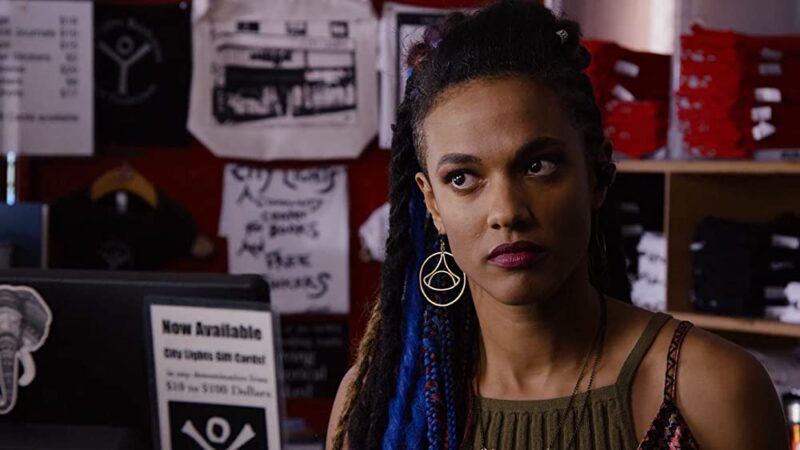
It was inevitable that I would love Neets at all, for her actress had played Martha Jones, one of the best and most routinely hated and disrespected companions in all of Doctor Who history due to antiblackness and misogynoir. I had been championing Martha for years, even before I finally watched her season on the actual show. Once I saw she was a part of this fascinating new series, I knew I would love her, and by golly, I did.
A bisexual, biracial Black woman raised by a single mother and three Black men who all agreed to be her fathers, for none of them knew which one was the biological dad (I mean, how fucking awesome!), Neets was the perfect, unconventional woman to fight alongside her lady love, Nomi Marks. After a memorable introduction of realistic, unabashed lesbian sex, complete with a dripping dildo, we also quickly learn of Amanita’s grit when she shuts down someone in their San Francisco friend group displaying blatant transphobia towards Nomi, affirming Nomi’s gender while also threatening her verbal attacker in the process. Neets is also unique in that she almost immediately believes/understands the way the telepathic hive mind Nomi shares with her pseudo-siblings, and truly believes it to be real despite not being to hear/see/speak to the other sensates like Nomi can. The girl is no stranger to strange things. The series ends with their beautiful wedding, stealing hearts everywhere, I’m convinced.
Neets was tough, sensual, supportive, fierce, and nuanced even if she wasn’t one of the main sensates. She was fairly well fleshed-out and got to show a lot of badass qualities right out the gate all the way to the end of the series. Best of all, we didn’t end the series by burying the gays. They got married.
Conclusion
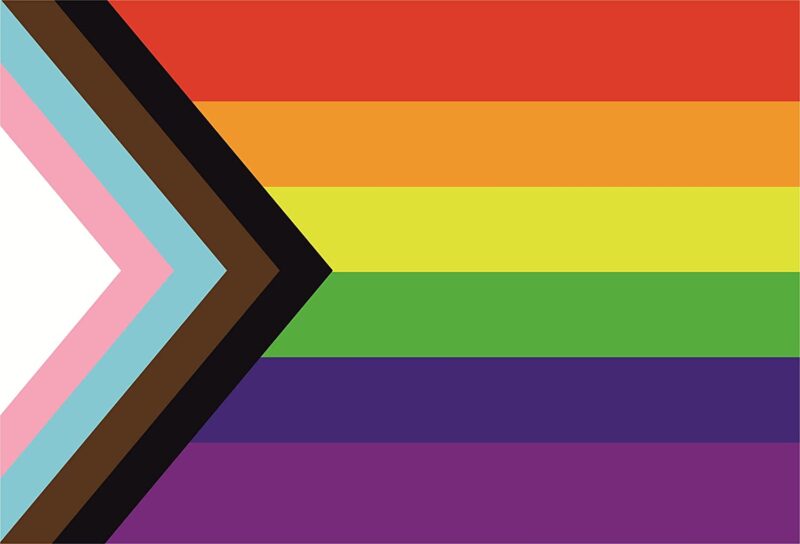
It is important that we continue to get excellent, nuanced Black LGBTQIA+ characters in our media, and superhero content are no exception. The MCU and DCEU are still mostly lacking in this representation, aside from Danielle Brooks’ character in Peacemaker, a series I won’t even see for her (not a fan of John Cena or the Peacemaker character from the DCEU, don’t know him in the comics). The Harley Quinn series should definitely confirm Catwoman’s bisexuality. The Batman saw Zoe Kravitz play Selina as bisexual, but the dialogue and narrative didn’t exactly confirm it. We need more obvious, unabashed, undeniable examples of Black queer couples and relationships. If done well, like in Sense8, interracial queer relationships are fine, but we still need more examples of Black queer couples to choose from. I want one day to actually be sick of all the queer content all over the place, the way the hets claim to be.
Be the first to leave a review.
Your browser does not support images upload. Please choose a modern one
I identify as a womanist. I also identify as both gay and queer. I am gender fluid and respond to he/him, she/her, and they/them. I am a Black American-Descendant of American Chattel Slavery who is pro Black Diaspora and pro creating Global Black Strongholds (Blacks across the Diaspora holding it down in each region to allow all Blacks to go to each, and be safe and in community together). I am a comics, tv, movie, and video game stan. My expertise for comics and related media are DC Comics, Marvel Comics, Archie Comics, and a little bit of others here and there, but I'm hoping to branch out to other, Blacker and indie comics and related content. I'm a binge watcher and can talk about shows and movies for days. You can find me on YouTube and various other social media platforms as thaboiinblue.

2 Comments
Leave a Reply
Cancel reply
Leave a Reply
This site uses Akismet to reduce spam. Learn how your comment data is processed.

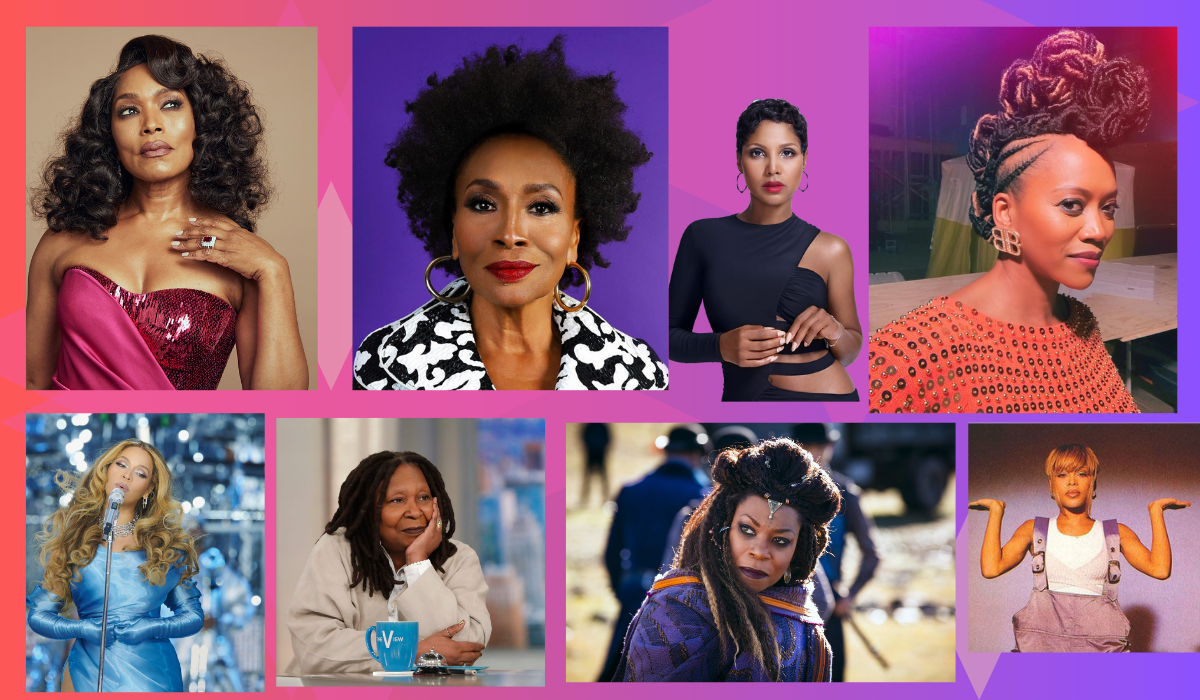








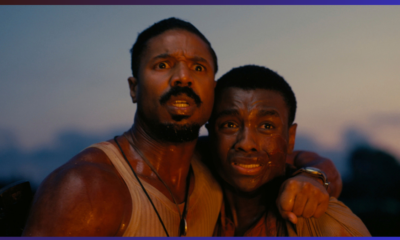

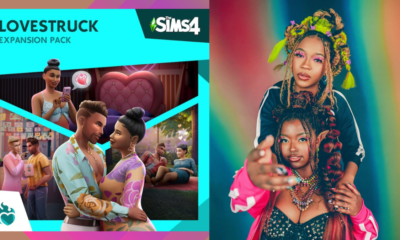

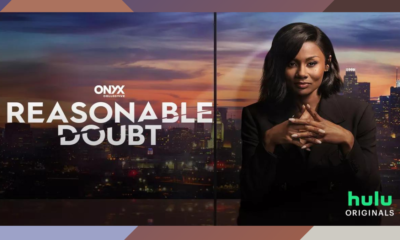








Pingback: Noah's Arc Returns: Here's What We'd Like To See
Pingback: Memorable Queer Characters in TV Shows